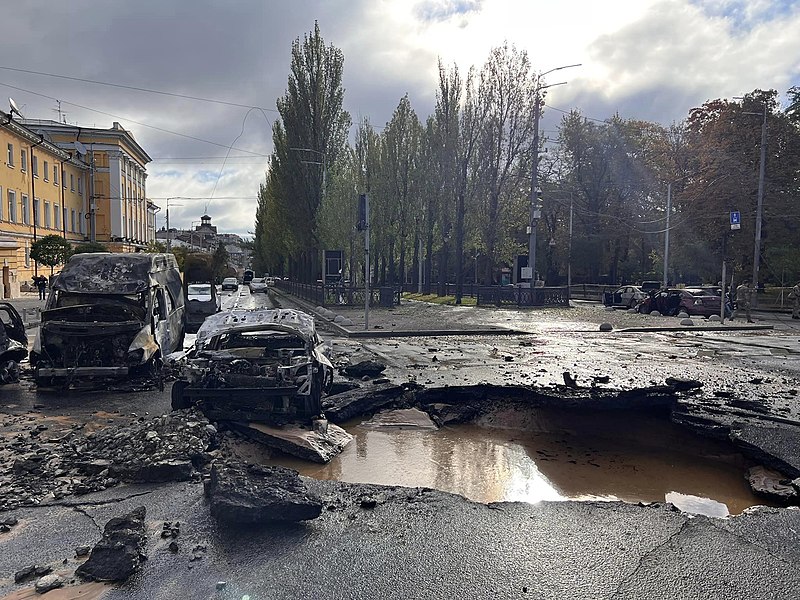The ongoing war in Ukraine has resulted in a record high in military spending all over the world, according to a Swedish think tank. The record high is the first since 30 years ago, following the end of the Cold War.
The Stockholm International Peace Research Institute said in a statement on Monday that the war in Ukraine fueled the world’s military expenditure by 3.7 percent in real terms in 2022 to $2.24 trillion. Military spending in Europe went up by 13 percent last year, mainly due to the war, but many countries have also increased their military budgets and planning for further increases due to tensions in other regions.
“This included multi-year plans to boost spending from several governments,” said SIPRI Senior Researcher Diego Lopes da Silva. “As a result, we can reasonably expect military expenditure in Central and Western Europe to keep rising in the years ahead.”
Ukraine’s military spending went up by 640 percent in 2022, making it the largest annual increase recorded in SIPRI’s data going all the way back to 1949, not including the military aid provided by the West. SIPRI estimated that military aid by the United States made up 2.3 percent of the country’s overall military spending in 2022. The US is the world’s top spender by far, as its overall military expenditure only had a marginal increase in real terms.
Russia’s military spending, however, went up to an estimated 9.2 percent, but SIPRI has acknowledged that the numbers are “highly uncertain” due to the “increasing opaqueness” by financial authorities in Moscow since its invasion of Ukraine in February last year.
SIPRI’s Military Expenditure and Arms Production Program Director Lucie Beraud-Sudneau said the war actually cost Russia more than Ukraine, citing the differences between Russia’s budget plans and its actual military spending in 2022.
Meanwhile, the United Kingdom said on Tuesday that Russia’s casualty rate may have fallen by 30 percent compared to the high casualty rates its forces suffered from January to March this year. The British defense ministry cited numbers released by Ukraine’s General Staff which suggested that the casualties on the Russian side went down from 776 in March to around 568 in April. While the numbers are not certain, they would appear to be in line with the “general trend.”



 Federal Appeals Court Allows Trump’s National Guard Deployment in Washington, D.C. to Continue
Federal Appeals Court Allows Trump’s National Guard Deployment in Washington, D.C. to Continue  UN Warns Gaza Humanitarian Aid at Risk as Israel Registration Rules Threaten NGO Operations
UN Warns Gaza Humanitarian Aid at Risk as Israel Registration Rules Threaten NGO Operations  Republicans Raise National Security Concerns Over Intel’s Testing of China-Linked Chipmaking Tools
Republicans Raise National Security Concerns Over Intel’s Testing of China-Linked Chipmaking Tools  Trump Administration Reviews Nvidia H200 Chip Sales to China, Marking Major Shift in U.S. AI Export Policy
Trump Administration Reviews Nvidia H200 Chip Sales to China, Marking Major Shift in U.S. AI Export Policy  Dan Bongino to Step Down as FBI Deputy Director After Brief, Controversial Tenure
Dan Bongino to Step Down as FBI Deputy Director After Brief, Controversial Tenure  U.S. and China Push for Ceasefire as Thailand–Cambodia Border Clashes Escalate
U.S. and China Push for Ceasefire as Thailand–Cambodia Border Clashes Escalate  Trump Expands U.S. Travel Ban to Antigua and Barbuda, Dominica, Sparking Economic Fears in the Caribbean
Trump Expands U.S. Travel Ban to Antigua and Barbuda, Dominica, Sparking Economic Fears in the Caribbean  Kennedy Center Reportedly Renamed Trump-Kennedy Center After Board Vote
Kennedy Center Reportedly Renamed Trump-Kennedy Center After Board Vote  U.S. Initiates $11.1 Billion Arms Sale to Taiwan Amid Rising China Tensions
U.S. Initiates $11.1 Billion Arms Sale to Taiwan Amid Rising China Tensions  U.S.-Russia Talks in Miami Raise Hopes for Potential Ukraine War Deal
U.S.-Russia Talks in Miami Raise Hopes for Potential Ukraine War Deal  Barham Salih Elected as Next UN High Commissioner for Refugees
Barham Salih Elected as Next UN High Commissioner for Refugees  Trump Signs Order to Ease Federal Marijuana Rules, Signaling Major Policy Shift
Trump Signs Order to Ease Federal Marijuana Rules, Signaling Major Policy Shift  Italy Supreme Court Upholds Salvini Acquittal in Migrant Kidnapping Case
Italy Supreme Court Upholds Salvini Acquittal in Migrant Kidnapping Case  Argentina Unions Rally Against Milei’s Labor Reform as Congress Debates Key Bill
Argentina Unions Rally Against Milei’s Labor Reform as Congress Debates Key Bill  Canada Signals Delay in US Tariff Deal as Talks Shift to USMCA Review
Canada Signals Delay in US Tariff Deal as Talks Shift to USMCA Review  Trump Attends Dover Ceremony Honoring U.S. Personnel Killed in Syria
Trump Attends Dover Ceremony Honoring U.S. Personnel Killed in Syria  Syria, Kurds and U.S. Race to Show Progress on SDF Integration Deal
Syria, Kurds and U.S. Race to Show Progress on SDF Integration Deal 































